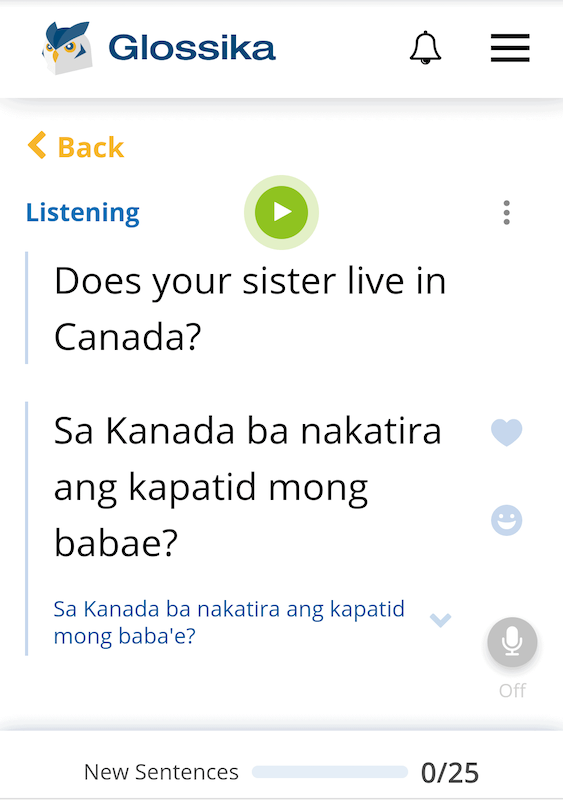Does Tagalog Have Conjugations? (Simple Explanation With Examples)
Conjugation, or changing parts of a verb, is one of the most common ways that languages indicate when and how things happened. Although verb conjugations are common (especially in Western languages), they’re not at all universal.
So, you may wonder, does Tagalog have conjugations? Tagalog verbs are conjugated to identify three things: aspect (what state the action is in), mood (attitude or context around the action), and focus (relationship of the action and noun).
In fact, their conjugation can convey as much meaning as a few words in English. Tagalog pronouns and particles also have different forms for case and number, but the subject/object system is quite foreign and unique. Furthermore, Tagalog verbs, nouns, pronouns, and particles need to agree with each other.
In some ways, conjugation is simpler in Tagalog than in most European languages. In other ways, it’s much more difficult, and actually the hardest part of the language for foreigners to learn.
Here, we’ll take a closer look at what exactly is going on with conjugations (and inflections in general).
How & why Tagalog conjugates verbs
First off, a quick note on terminology: “inflection” is the general term for changing any word to convey grammatical information. “Conjugation” is when we inflect verbs, specifically.
Anyway, Tagalog uses verb conjugation to handle three very important things.
They’re a little different from what English speakers are used to. We have other ways to convey the same information, of course; we just don’t always use verbs alone. That might sound a little confusing, but it will make sense as we see some examples.
English and most European languages primarily conjugate with verb endings. For instance, we would change talk → talks → talked. There are exceptions, of course, but more on those later.
Tagalog has verb ending changes (suffixes) as well. Just as often, it has changes to the beginning (prefixes) or middle (infixes) as well as repeated syllables. It’s frequently some combination of those, which is understandably confusing at first!
With that context in mind, let’s see what those conjugations are actually for.
Aspect gives status
Tagalog doesn’t use tense, but it does use aspect, which can accomplish the same things.
What’s the difference?
In English, we add -ed to say something occurred before the present. That’s tense.
But we use -ing to say that it is/was/will be ongoing rather than finished. That’s aspect.
This distinction gets really technical really quickly, so for now, just think of tense as relationship to the present and aspect as ongoing-ness.
Anyway, Tagalog uses the following aspects:
- Complete: the action has already concluded
- Recently complete: the action has just concluded
- Progressive: the verb is still going on
- Contemplative: the verb hasn’t begun yet (but presumably will)
- Infinitive: the verb is just a general notion (and may or may not actually happen); this is also the dictionary form of the word in most cases
- Imperative: the verb is a command or request
(The imperative only exists for certain combinations of verbs and nouns/pronouns, but the first four are basically universal.)
Nothing is more Filipino than asking someone whether they’ve eaten, so let’s take kain (“eat”) as an example.
- Complete: kumain ako (“I ate/was eating but am not eating now”)
- Recently complete: kakakain ako (“I just finished eating”). This is more common with the ko focus instead of ako, but that’s another topic.
- Progressive: kumakain ako (“I’m eating now”)
- Contemplative: kakain ako (“I may/will eat but haven’t started yet”)
- Infinitive: Gusto kong kumain (“I want to eat”)
- Imperative: Kain ka na! (“You, eat already!”)
Notice how the base word kain doesn’t appear? It’s always in some modified form–some conjugation.
Did you also notice how some of these forms stick -um- into the middle of kain? That’s because kain is what we call an um verb in Tagalog, sort of like how there are -er, -ir, and -re verbs in French.
Well, kind of. Those are the infinitive endings in French whereas -um- is just sometimes the infix in Tagalog, but that’s a little pedantic. The point is that certain groups of verbs all conjugate with the same pattern for aspects–just like in other, more familiar languages.
There are also ma-, mag-, i-, and in- verbs, but I’ll refer you to Wikipedia for more comprehensive examples.
Mood gives subjective context
Mood is one of those grammatical features that we use continual without realizing it. But if you recall the horrors of memorizing Spanish subjunctive verbs and their rules, then you’re more aware than most.
It’s basically the social or emotional context around the action.
For instance, think about “to be” in English. As a fact in the present, we’d “I am” (indicative mood). As a hypothetical or desire in the present, we’d say “I wish I were” (subjunctive mood.
And so it goes in Tagalog. The list of moods is a little different, but instead of adding more words like in English or changing the suffix like in French, they usually take a different prefix.
There are disagreements about the exact number of moods in Tagalog, but to give at least one concrete example, let’s look at intindi (“understand”).
- Indicative: naiintindihan ako (“I understand”)
- Potential: nakakaintindi ako (“I’m able/enabled to understand”)
The difference is a little subtle, but notice how Tagalog (at least here) just uses a couple of letters in the suffix whereas English uses a couple of additional words?
An even more subtle difference is something like bumili (“bought”; indicative) versus namili (“went shopping”; distributive). Not only does English use an additional word to express the difference, but it uses a different verb in the first place!
You’ll find several different mood affixes for each verb type (remember -um-/ma-/mag-/i-/in-?). Some are the same between verb types and some are not, but there’s no obvious pattern to it. This, of course, is very tricky for students!
Focus/voice/trigger gives emphasis
Third and finally, Tagalog verbs conjugate for focus, also known as the trigger. This is a tricky one to explain, since Western languages generally don’t have this exact concept.
Practically speaking, it’s a little bit like the active versus passive voice: one emphasizes what does the action and one emphasizes what experiences the action.
But it’s important to note that even though Tagalog reminds English speakers of the passive voice, it’s not.
Like other related languages, Tagalog has a really unique focus/trigger/voice system. Basically, there’s an actor (who does) and perhaps a patient (who is done to).
In “I ate”: “I” is the actor.
In “I ate the rice”: “I” is the actor and “rice” is the patient.
That’s not quite the same as subject and object, though.
In “I ate the rice”: “I” is the subject and “rice” is the object.
But in “rice was eaten by me”: “rice” is the subject and “I” (now “me”) is the object. The actor and patient haven’t changed, since “I” is still the one who did the action, but the grammatical subject and object did change.
In Tagalog, you can emphasize either the agent or the patient without turning it into the passive voice (since, again, the passive voice doesn’t exactly exist).
- Agent focus: kumain ako ng kanin (“I ate the rice”). It’s as if you’re answering: “What did you do?”)
- Patient focus: kinain ko ang kanin (“It was I who ate the rice/the rice was eaten by me”). It’s as if you’re answering, “What happened to the rice?”
- Instrument focus: kinain ko ng kanin ang tinidor (“I ate the rice with a fork”). It’s as if you’re answering: “How/with what did you eat the rice?”
Don’t worry if that doesn’t make sense! Again, it’s one of the most distinctive features of Tagalog and related languages, and it’s something that new learners always stumble over.
There are a few other types of focus, too. These include:
- Location
- Beneficiary
- Mutuality
- Causation
You can mix and match them to some extent (e.g., “I ate the rice in the restaurant with a fork”). It’s usually a matter of rearranging the ng and ang words and sometimes changing the mood.
As with most other grammatical topics, it’s easier to understand through experience and context than through rote memorization.
Does Tagalog have irregular verbs?
Rules usually mean exceptions. Like almost every language with conjugations, Tagalog has irregular verbs as well. But they’re irregular in a different way from what you might expect.
For instance, irregular English verbs are ones like speak → speaks → spoke that don’t follow the usual underlying pattern.
Irregular Tagalog verbs still follow the usual underlying pattern of affixes for aspect, mood, and focus. Instead, they typically have a vowel change or a couple of letters swapped in the root word.
A common example is bukas (“open”) → buksan (“to open”) or bili (“buy”) → bilhin (“to buy”).
Inflecting pronouns in Tagalog
As mentioned earlier, Tagalog pronouns also have inflections. (Conjugation is the specific type of inflection that verbs have, so we use the word “inflection” for other parts of speech.)
And while they’re not exactly the same as in English, they’re much simpler than Tagalog verbs!
Fortunately, there are only three types:
- Direct: the agent of a verb
- Indirect: the patient of a verb and the possessive pronoun
- Oblique: most other grammatical roles, e.g., connected to a preposition
For example, let’s look at the first-person singular pronoun:
- Direct: ako (“I”)
- Indirect: mo (“me/my”)
- Oblique: akin (“me” after a preposition)
Sa is basically an all-purpose pronoun in Tagalog, so using it means you’ll almost always use the oblique pronoun for whatever sa refers to. English verbs rely heavily on prepositions, but Tagalog verb affixes contain so much information (like direction or cause) that different prepositions aren’t really necessary.
The grammatical persons (first/second/third) and number (singular/plural) are similar to English’s system. The only major difference is that Tagalog differentiates between an inclusive and exclusive first-person plural:
- Inclusive: tayo (“we” including you)
- Exclusive: kami (“we” but not you)
Quick thoughts on learning Tagalog verbs
English often uses additional words or totally different base verbs to convey mood, aspect, and focus. Tagalog usually handles this with several affixes instead. I suppose you could say it’s more economical, meaning you can express more with fewer base verbs in Tagalog, but you do have to keep several affixes straight.
It’s easy to get lost in verb conjugation charts, and that’s before we even try to wrap our heads around the pronoun alignment system.
There’s no harm in memorizing concrete examples of things you routinely need to say. Telling your significant other that you just went shopping for something versus actually buying it is a helpful nuance.
But by and large, it’s better to listen and repeat than to bury yourself in academic materials. This article has only scratched the surface of Tagalog grammar, but you can see how things that are simple in practice get complex and abstract in theory.
If you want to absorb useful Tagalog grammar without getting totally hung up on pedantic details, then I suggest Glossika. That’s been my main study tool for months now, and while it’s pricey, I’m generally happy with the results and experience. Skip on over to their website for a free trial, or start with my review here.








